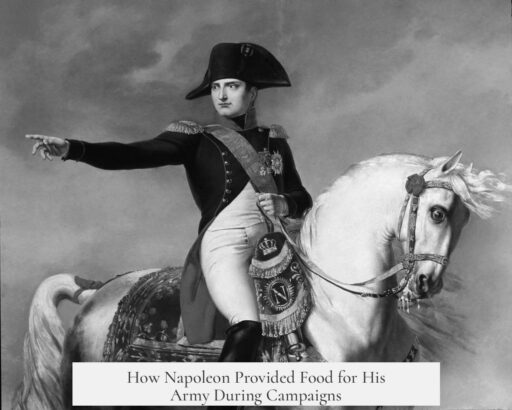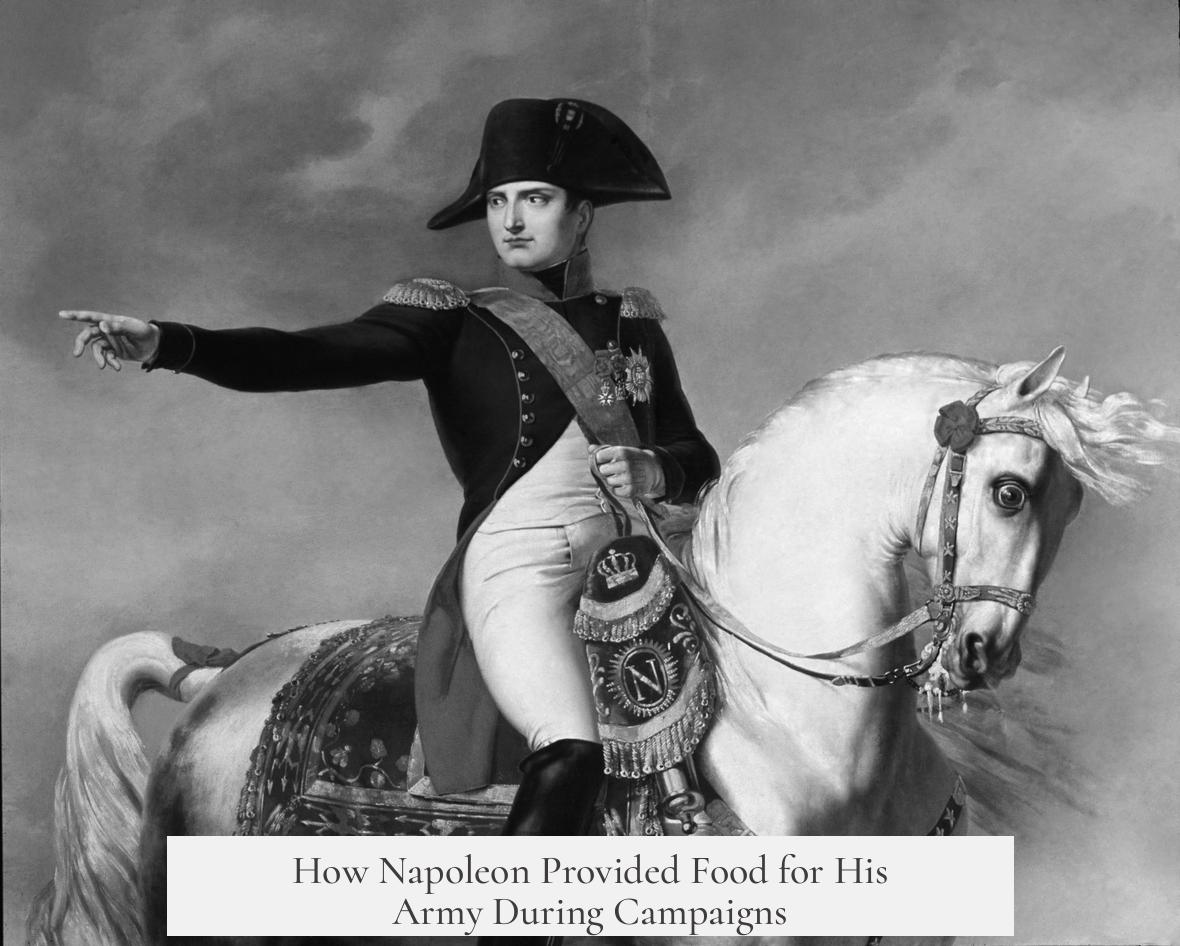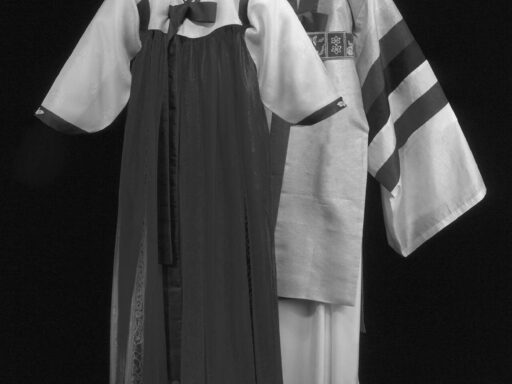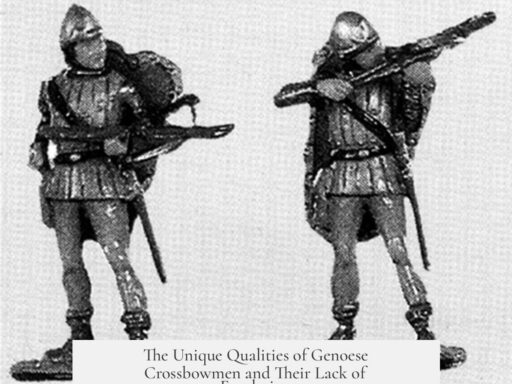Napoleon kept his army fed during campaigns through a combination of local foraging, purchasing provisions, evolving food preservation technologies, and careful logistics management. His approach adapted to the scale and geography of his campaigns but faced major challenges, especially during the Russian expedition.
Napoleon’s armies generally relied heavily on foraging. Soldiers would buy, hunt, or scavenge food from the local countryside to sustain themselves. This method simplified logistics, as soldiers carried minimal food supplies, reducing baggage trains. In Western and Central Europe, this approach worked efficiently; local merchants and rural communities supplied enough provisions for the advancing troops.
However, during the march on Moscow, this supply strategy faltered. Eastern Poland and Russia offered much less available food. Napoleon’s troops encountered scarcity, especially as the campaign marched further east. The massive army found fewer resources. They often went days without adequate food or water. Soldiers resorted to pillaging and stealing from local villages to survive during the hot summer months.
The Russian winter campaign highlighted logistical failures and underscored the saying attributed to Napoleon—“An army marches on its stomach.” Starvation became a critical issue during the retreat. Soldiers ate anything edible, including horse meat, cabbage, oats, and fat. Jacob Walter, a soldier from the campaign, survived on these limited rations. Scorched earth tactics by Russian forces further deprived the French army, as the retreat passed through badly damaged land devoid of food. This was a major contributing factor to the catastrophic losses.
| Food Supply Method | Description | Effectiveness & Challenges |
|---|---|---|
| Foraging and Purchasing | Soldiers bought provisions or gathered food locally during campaigns. | Worked well in Europe; failed in Eastern campaigns due to scarcity. |
| Pillaging and Theft | Seized supplies from villages when food was scarce. | Temporarily relieved shortages; caused local distress; not sustainable. |
| Food Preservation (Canning) | Introduced by Nicolas Appert via airtight containers; prevented spoilage. | Extended shelf life of rations; helped sustain troops over time. |
| Logistics & Supply Caravans | Organized transport of provisions; kept pace with army movements. | Critical for large army needs; slow advances if supply lagged. |
Napoleon promoted innovations in food preservation to improve supply reliability. In 1795, he supported a government prize of 12,000 francs for inventing better food storage techniques. Nicolas Appert responded with a method of boiling food sealed in airtight glass containers. Tested successfully by 1806, this pioneering canning process prevented spoilage caused by microorganisms. This advancement allowed Napoleon’s army to carry longer-lasting rations, providing a tactical edge by reducing dependence on local supplies during prolonged campaigns.
Logistics played a crucial role in feeding troops. Napoleon, skilled in artillery and supply chain planning, ensured that his armies did not advance faster than supply caravans could follow. This maintained steady provisioning where possible. However, larger armies required extensive supply lines vulnerable to delays and enemy interference.
Napoleon’s approach also reflected the political and social context. After the French Revolution, rising nationalism reduced desertion risks among soldiers sent to forage. This allowed for smaller supply trains and faster operations, relying on soldiers to secure food locally.
Despite these strategies, Napoleon contemplated more radical solutions. He considered equipping each soldier with a hand-mill to grind corn and bake bread personally. This plan aimed to increase independence from unreliable local sources but was never implemented at scale.
Napoleon’s own remarks underline the centrality of food supply to military success. He believed hunger drives the world and warned that “there is no subordination with empty stomachs.” His saying emphasizes that a hungry army cannot fight effectively.
In summary:
- Napoleon’s army initially fed itself by purchasing and foraging, efficient in resource-rich Europe.
- Food scarcity during the Russian campaign exposed weaknesses in this system, leading to starvation and loss.
- Innovations like Appert’s canning method improved food preservation, benefiting troops on long campaigns.
- Logistics planning ensured supply caravans kept pace, though stretched during large invasions.
- Nationalism after the French Revolution supported effective foraging by reducing desertions.
- Napoleon viewed well-fed soldiers as vital to military success, encapsulated by the phrase “An army marches on its stomach.”
How did Napoleon’s army get food during campaigns in Europe?
Soldiers were expected to buy food from local merchants and forage by hunting or scavenging. This system worked well in Western and Central Europe but became harder in less populated areas like Eastern Poland.
What role did pillaging play in feeding Napoleon’s troops?
During some campaigns, especially in summer, soldiers stole food from villages. Despite this, many still faced days without water or food, highlighting the limits of relying on pillaging alone.
How did food scarcity affect Napoleon’s army during the Russian campaign?
As winter set in, supplies ran low. Soldiers survived on whatever they could find, including horses. The scorched earth tactics left little for foraging during the retreat, worsening starvation risks.
What advances in food preservation did Napoleon encourage?
In 1795, Napoleon’s government offered a prize for food preservation. Nicolas Appert invented canning, which kept food safe longer and helped supply troops on campaigns.
How did logistics influence feeding Napoleon’s army?
Napoleon, skilled in logistics, ensured his army did not outpace supply caravans. This helped maintain a steady flow of provisions and kept soldiers fed during movements.
Did nationalism affect how the army was fed?
Nationalism reduced desertion risks when soldiers foraged for food. This allowed the army to operate with shorter supply lines and faster advances.




